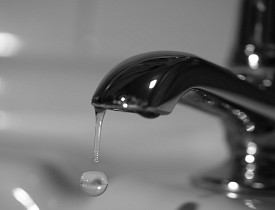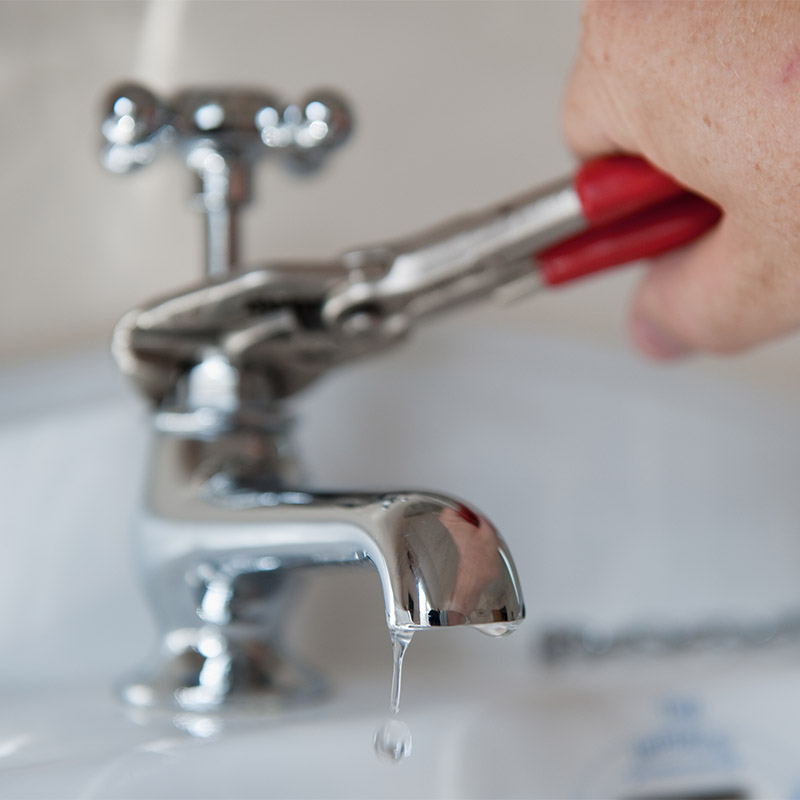When It's Essential to Fix a Leaking Faucet
When It's Essential to Fix a Leaking Faucet
Blog Article
They are making several great points regarding Why Are My Faucets Dripping (And Can I Fix It Myself)? in general in the article beneath.

Trickling taps could seem like a minor aggravation, however their influence surpasses just the aggravation of the sound. From wasting water to sustaining unnecessary financial expenses and health and wellness threats, neglecting a dripping faucet can lead to different effects. In this post, we'll delve into why it's essential to address this common house issue quickly and effectively.
Wastefulness of Water
Ecological Influence
Leaking taps contribute substantially to water wastage. According to the Environmental Protection Agency (EPA), a single tap trickling at one drip per second can waste more than 3,000 gallons of water per year. This not just pressures water resources however also influences ecological communities and wildlife dependent on them.
Financial Prices
Enhanced Water Costs
Beyond the ecological effect, dripping faucets can blow up water bills considerably. The built up waste gradually translates into greater utility expenditures, which could have been prevented with prompt repairs.
Prospective Property Damage
Additionally, long term trickling can bring about harm to components and surface areas bordering the faucet. Water build-up can cause discoloration, corrosion, and even structural issues if left ignored, causing additional fixing costs.
Health Issues
Mold And Mildew and Mold Development
The consistent visibility of moisture from a dripping tap creates an ideal environment for mold and mildew and mold development. These fungi not only compromise interior air high quality yet likewise present wellness dangers, especially for individuals with respiratory problems or allergic reactions.
Waterborne Illness
Stagnant water in dripping taps can come to be a breeding ground for bacteria and other pathogens, enhancing the danger of waterborne illness. Pollutants such as Legionella microorganisms prosper in stationary water, possibly leading to major illnesses when ingested or breathed in.
Do it yourself vs. Expert Repair
Pros and Cons of DIY Repair
While some might try to deal with a trickling tap themselves, DIY fixings feature their own collection of difficulties. Without proper expertise and devices, DIY efforts can worsen the issue or cause incomplete fixings, extending the trouble.
Benefits of Working With an Expert Plumber
Hiring a specialist plumber makes sure that the underlying source of the dripping tap is addressed effectively. Plumbings have the proficiency and equipment to diagnose and repair tap concerns successfully, saving time and reducing the danger of additional damage.
Step-by-Step Overview to Fixing a Dripping Faucet
Tools Called for
Before attempting to repair a leaking faucet, collect the necessary devices, consisting of an adjustable wrench, screwdrivers, replacement parts (such as washers or cartridges), and plumber's tape.
Common Faucet Issues and Their Solutions
Identify the type of faucet and the certain problem creating the drip. Typical issues consist of worn-out washers, corroded shutoff seats, or defective O-rings. Describe producer instructions or online tutorials for step-by-step support on repair services.
Safety nets
Regular Maintenance Tips
To prevent trickling faucets, execute routine upkeep such as cleaning up aerators, inspecting for leaks, and changing damaged components promptly. In addition, think about installing water-saving devices or updating to extra effective fixtures.
Value of Prompt Repairs
Resolving dripping taps as soon as they're noticed avoids more water wastefulness and possible damages, ultimately saving both water and money over time.
Effect On Building Worth
Understanding of Well-Maintained Residential Property
Keeping a building in good condition, consisting of resolving upkeep concerns like dripping taps, enhances its regarded value and desirability amongst prospective customers or lessees.
Influence on Resale Value
Properties with properly maintained plumbing fixtures, consisting of faucets, command greater resale values in the realty market. Resolving trickling faucets can contribute to a positive perception during building examinations and settlements.
Environmental Duty
Specific Contribution to Conservation
Taking responsibility for taking care of leaking taps straightens with broader initiatives toward water preservation and ecological sustainability. Every individual's actions collectively make a substantial effect on preserving priceless resources.
Lasting Living Practices
By focusing on prompt fixings and taking on water-saving habits, individuals contribute to sustainable living practices that benefit both existing and future generations.
Conclusion
Addressing a trickling faucet exceeds simple convenience; it's an important action towards saving water, decreasing economic costs, and protecting health and wellness and building. Whether with do it yourself repairs or professional help, doing something about it to repair leaking taps is a tiny yet impactful means to advertise liable stewardship of sources and contribute to a much healthier, a lot more sustainable future.
How to Fix a Leaky Faucet: Step-by-Step Repair Guide
A leaky faucet may seem like a simple annoyance, but if it's not fixed promptly, that leak could cost hundreds to potentially thousands. From water damage to mold, mildew, and high water bills, even a tiny leak can be catastrophic if left unattended. Damage like this can even affect the overall value of your home, so it's important to take the right approach for leaky faucet repair. You may need the help of a plumber in some cases, but we've got a few tips you can try on how to fix a leaky faucet before calling the pros.
Four Faucet Types
When you're learning how to fix a leaky faucet, the first step is knowing what kind of faucet you're working with! There are four common types.
Cartridge Faucets
Cartridge faucets come in one- or two-handled varieties. In one-handled cartridge faucets, hot and cold water combines in a single cartridge. In the two-handled versions, hot and cold water are controlled separately and mixed in the faucet.
Ball Faucets
Ball faucets have a single lever you push up and down to adjust the pressure and rotate to change the temperature. A slotted metal ball controls the amount of water allowed into the spout.
Compression Washer Faucets
They're the oldest type of faucet, but they're still used in many homes — especially older ones. Compression faucets have two separate handles that, when turned, raise or lower the washer that seals a water valve. This valve stops water from flowing through the faucet when it is turned off.
Disc Faucets
Disc faucets rarely need to be repaired due to their maintenance-free design. The water flow is controlled by two discs — the upper one raises and lowers against a fixed lower disc, creating a watertight seal. If your disc faucet starts leaking, you may need to replace the seals or clean residue buildup from the inlets.
Fixing a Leaky Faucet
Step 1: Turn Off the Water
Whether you're learning how to fix a leaky bathtub faucet or how to fix a leaky kitchen faucet, always turn off the water supply to your working area when you're fixing a leak. The last thing you want is a flood added to your list of things to fix.
Look for the shutoff valves below your sink or around the tub and turn them clockwise to stop the water flow. If your faucet doesn't have shutoff valves, you may need to turn off the water for the whole house. Check to make sure it's off by turning the faucet on. If nothing comes out, you're ready to start the repair.
Step 2: Take Apart the Faucet
How you disassemble your faucet depends on the type of fixture you have. You can use a flathead screwdriver to remove the caps on top of the handle or handles for cartridge and compression faucets. Inside, you should see handle screws. Unscrew these with a screwdriver to remove the handle.
Disc- and ball-style faucets will typically have an inlet screw near the handle, and removing that will reveal the interior of the faucet.
Detach the Valve Stem
For cartridge- and compression-style faucets, you'll see the inner valve stem or cartridge once you remove the faucet handles. If you have a compression faucet, unscrew the brass valve stem. If you have a cartridge faucet, pull out the cartridge. If your cartridge has been in place for a while, it may require some tools or extra force to remove it due to mineral deposits.
Examine and Replace Parts
Once you've removed the parts, check them out to confirm what needs to be replaced. You may see corroded rubber washers, O-rings, stems, or cartridges. On a ball-style faucet, check the seats and springs for damage.
If you need to repair a leaky disc faucet, check the inlet and seals on the lower disc.
Once you determine what parts must be replaced, visit your local hardware store. Bring the damaged parts with you to ensure you can purchase the correct components to replace them.
Clean Valves and Faucet Cavity
If you've removed a stem or cartridge, you may notice mineral buildup in the faucet's threads. Use white vinegar to clean the valve seat by soaking it for a few minutes, then scrub it away with a soft toothbrush and rinse with warm water. You can also clean the interior of the faucet in the same way.
Reassemble the Faucet
Once your faucet is cleaned and the required parts have been replaced, it's time to reassemble it. Put the pieces back together and slowly turn the water supply back on. Doing this slowly is crucial because too much initial water pressure can damage the new hardware you've just installed.
https://homewarranty.firstam.com/blog/how-to-fix-leaky-faucet

I was introduced to that write-up on Why It's Important to Fix Leaky Faucets through an associate on another website. Appreciated our blog entry? Please share it. Let somebody else find it. We take joy in reading our article about Leaky Faucets: Why They Happen & What to Do About Them.
Report this page